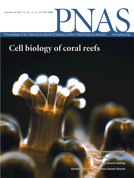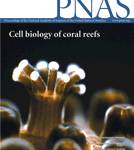 Valio’s Lactobacillus rhamnosus GG (LGG®) is the most frequently studied and used probiotic. Under the supervision of researchers at the Institute of Biotechnology, and the Department of Basic Veterinary Sciences at the University of Helsinki, an international research team determined the genome sequences of LGG and a bacterium closely related to it. The results, published in the renowned PNAS journal, shed light on the origin of probiotic mechanisms.
Valio’s Lactobacillus rhamnosus GG (LGG®) is the most frequently studied and used probiotic. Under the supervision of researchers at the Institute of Biotechnology, and the Department of Basic Veterinary Sciences at the University of Helsinki, an international research team determined the genome sequences of LGG and a bacterium closely related to it. The results, published in the renowned PNAS journal, shed light on the origin of probiotic mechanisms.
Many research publications have confirmed that bacteria promote health and support immune systems and improve digestion. Some probiotics can also alleviate the symptoms suffered by those with irritable bowel syndrome. As many as every fifth westerner suffers from this pain, also called spastic colon. Studies say that LGG probiotics are also an effective treatment method for reducing children’s atopic symptoms, and the risk of respiratory infections.
In its recent publication, the research team showed that the protein component found by the team has a fundamental role in LGG binding with the human intestinal mucus. The team found out that the surface structures of LGG has a specific adhesion component. Remarkably, the binding feature has been assumed to be one of the most important characteristics of bacteria with health-benefiting effects. Moreover, the researchers assume that the protein structure in question enables the health-promoting effects of LGG and other probiotic bacteria, and the positive immune modulation produced by them.
According to Tuomas Salusjärvi, research manager for Valio, the successful sequencing provides valuable additional information to support the already existing research information. The safety of the LGG probiotic and its advantages to consumers can now be shown in an even better way than before. A significant research field has been established around probiotic bacteria. So far, thousands of scientific articles have been published on the subject. For this line of research, the findings of the genome, and the molecular mechanism possibly behind probiotics assists with future developments.
Matti Kankainen, Lars Paulin, et al. Comparative genomic analysis of Lactobacillus rhamnosus GG reveals pili containing a human-mucus binding protein
PNAS 2009 : 0908876106v1-pnas.0908876106. View Abstract View Full Article





